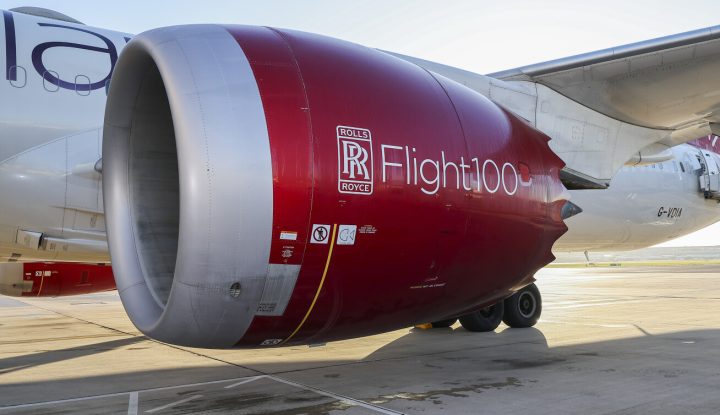Over the last six years, Sabre has engaged in research with graduate students at The University of Texas at Austin. This mutually beneficial partnership allows our team to get additional perspectives on current industry challenges, while helping students gain practical, hands-on research experience with real-life situations.
Historically, we have collaborated with student teams on numerous projects including manpower planning, fleet planning, preferential bidding, vacation bidding, and crew forecasting. Many of the projects have evolved into features within existing product portfolios, like Crew Planner availability forecasting, which is one of the first services featured in our recently announced Sabre Travel AI™ – an artificial intelligence (AI)-driven technology platform and travel industry first.
“Our collaboration with UT Austin over the last several years has been valuable for both sides,” noted Sergey Shebalov, VP of research science at Sabre Labs and a sponsor of the UT collaboration program. “Students participating in the program are exposed to some of the most challenging problems we face in the travel industry and get practical experience solving them in an environment that replicates their future careers.”
During Q1 2021, we worked with two graduate students and two students pursuing doctorate degrees, all of whom study operations research and industrial engineering. The focus of this year’s research effort was on flight trajectory optimization.
What is flight trajectory optimization?
Optimizing flight trajectories consists of designing and choosing the best possible path for a flight to take, accounting for a multitude of factors like wind, fuel consumption, and regulations in global airspace. The rules for how aircraft use global airspace are changing to facilitate growth and allow for more environmental, fuel efficient flying. Until recently, all flights had to follow predefined coordinate points in the sky known as nodes. Now, some air traffic control areas in Europe allow for Free Route Airspace (FRA), in which aircraft can fly outside of nodes. When flights can operate on dynamic pathways, airlines can further optimize time and fuel. The freedom to construct routes dynamically within FRA adds considerable complexity to the optimization of flight paths.
The challenges to understand and solve
This year’s challenge was to find the best possible algorithms to generate optimal flight paths that also account for FRA. To explore this problem, the team focused on three main research questions:
- What is the best compromise between two algorithm approaches that will yield faster and/or more accurate results – (a) One that our current system uses where altitude and speed are factored in separately after other partial 3D routes are calculated, and (b) An approach where all factors, including speed and altitude, are factored in simultaneously, which can be error prone due to its complexity and the abundance of possible results?
- What is the impact of Free Route Airspace compared to traditional airway models?
- How can we utilize existing routes and speed up existing calculations?
To get started, the team utilized preexisting data on nodes then factored in components such as altitude, aircraft speed and mass, wind, and other weather conditions. They also had to work with Sabre’s current Flight Plan Manager, a multifaceted product that provides solutions to various industry challenges, including the design of cost-effective flight paths.

The work accomplished and the results
The students came up with creative solutions to generate flight paths and handle FRA – ideas that will enrich the performance of our Flight Plan Manager. They compared two popular algorithms by the names of A* (referred to as A-star) and Dijkstra’s algorithm, both of which are used to generate paths. For this task, they concluded that the algorithm known as A* performed more efficiently than Dijkstra’s algorithm. Since wind is a crucial component in flight paths, the team used vector geometry to identify, calculate, and refine the most efficient method of factoring wind into their python code. The team also integrated machine learning into the A* algorithm, creating a model that generated calculations six times faster than their initial approach.
The final product of the student’s research was a fully developed web dashboard that generates optimized flight paths along with graphs and maps that can be used for analysis. This tool will jumpstart Sabre’s exploration of FRA and serve as an external debugging tool for some of our recently generated flight paths. Overall, we’re excited about the insights, research, and ideas their work has generated.
Continuing our university partnerships
Sabre’s collaboration efforts extend beyond UT Austin. We have researched recovery of airline operational issues with the Nanjing University of Aeronautics & Astronautics since 2018 and look forward to upcoming collaborations with NYU and Columbia.
As a company, we constantly challenge each other to seek out new perspectives. By combining Sabre expertise with the great minds at leading research universities, we’re able to consider other perspectives while solving and developing next-generation innovations that benefit our customers and consumers of travel across the globe.
Zoran Savic, a Director of Product Management and UT Austin collaboration sponsor, mirrors the excitement many Sabre team members have about these programs, “I can’t say often enough how much I believe that these partnerships will help to breed different ideas and viewpoints. I am excited that we are taking this path!”
Innovation is an ongoing process. Sabre values the relationships established with these universities and their students because there will always be a problem to solve, a product to enhance, or an experience to improve. By innovating together, we make travel happen.





